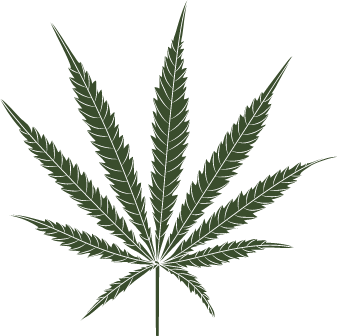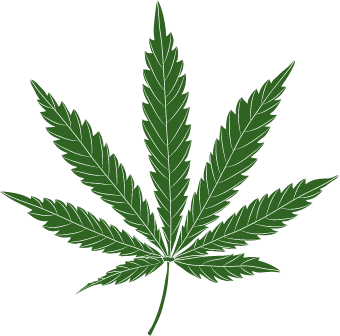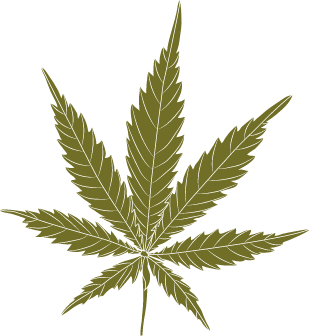Who can use Medicinal Cannabis?
New Zealand legalized the use of medical cannabis in 2018 under strict regulations. Patients with specific qualifying conditions can access medical cannabis through a doctor's prescription and a licensed supplier.
Qualifying Conditions:
The Ministry of Health currently lists 27 qualifying conditions for medical cannabis use in New Zealand, including:
- Chronic pain
- Nausea and vomiting due to chemotherapy
- Muscle spasticity associated with multiple sclerosis
- Epilepsy
- Glaucoma
- Palliative care
How do I access Medicinal Cannabis?
How do I access Medicinal Cannabis?
- Consult with one of our Doctors - Discuss your condition and explore if medical cannabis could be a suitable treatment option.
- Get a prescription - All prescriptions must be prescribed by a New Zealand doctor.
- Bring your prescription to your Local Pharmacy for dispensing or have your medication shipped discreetly to your home.
Can I transfer my medicinal cannabis care to Cannalogy Clinic?
Once our GP reviews your existing prescription and medical history, your consultation fee will be manually adjusted to $39 so that you’re not charged the full initial-consult rate for a care transfer.
How much will my script cost to fill?
In New Zealand, medicinal cannabis patients can typically expect to spend anywhere from $100 to $500 per month on their products. The average patient spends $278 per month, which is around $1 to $15 per day.
Do private health funds cover costs of treatment?
Each health fund varies in cover and you’ll need to check with your insurer to confirm if they provide any subsidy for alternative therapy.
How often am i required to consult with Cannalogy Clinic?
Cannalogy's clinical monitoring program requires patients to be consulted by our practitioners every three months or as directed by your practitioner. This helps to ensure patients are managing their symptoms as per their personalised treatment plan, ensuring patient safety and maintaining a high quality of patient care. Please continue to see your doctor for your three month follow up to review and continue your treatment plan.
What are the potential side effects?
What are the potential side effects?
Like any medication, side effects can occur, such as dizziness, fatigue, dry mouth, and drowsiness. Discuss potential risks with your doctor.
Can I drive after using medicinal cannabis?
Can I drive after using medicinal cannabis?
it is not recommended to drive while taking Medicinal Cannabis, unless complying with health professionals’ instructions. It is illegal and unsafe to drive if impaired or under the influence without a current legal prescription for the medication.
Can I take medicinal cannabis if I am pregnant or breastfeeding?
We recommend waiting to try medicinal cannabis if pregnant or breastfeeding, as scientific studies have yet to conclude its safety. Consult your healthcare provider for personalized advice.
What is CBD?
What is CBD?
CBD, otherwise known as Cannabidiol, is one of the most well-known phytocannabinoids found in the hemp plant. CBD’s claim to fame is its ability to support happy mood, balance and wellness.*
What are the effects of CBD?
CBD is a phytocannabinoid, and has been shown to help the ECS preserve the body’s natural supply of endocannabinoids. Science has demonstrated that supplementing our supply of endocannabinoids with phytocannabinoids may help the body’s ability to thrive in a wide variety of ways.*
How Is It Different Than Marijuana?
Long story short, Hemp and Marijuana are two different species of the same plant family — similar to a Roma Tomato and a Cherry Tomato. The main difference between these two species is the level of THC, so consider Hemp to be Marijuana’s sober botanical female cousin, containing less than 0.3% of THC.
What’s the difference between THC and CBD?
What’s the difference between THC and CBD?
THC (or delta-9-Tetrahydrocannabinol) is the main active ingredient in cannabis. It’s responsible for many of the pharmacological effects of cannabis – including its psychoactive effect.
CBD (or cannabidiol) is cannabis’s second most prominent compound. Unlike THC, it’s not known to cause intoxicating or euphoric symptoms. In fact, it helps counteract these effects.
What's the difference between Sativa and Indica?
Cannabis sativa and Cannabis indica are the two main types of cannabis. Sativa has a higher THC content, making it more energizing and delivering the characteristic “high” one expects with cannabis. Indica has a higher CBD content and induces calm, making it ideal for relieving stress, anxiety, and pain.
What is the Endocannabinoid System?
What is the Endocannabinoid System?
The Endocannabinoid System (ECS) is considered the master regulatory system of the body. It helps us maintain homeostasis (aka balance) in our bodies by communicating with other biological systems and helping other systems in the body stay healthy.*
What does the Endocannabinoid System Support?
We can’t say it enough: Balance. When life throws us curve balls and external or internal stressors disrupt the body’s function, the ECS is activated to return it to stability. ECS health is so important in our ability to function because of all the broad processes the ECS regulates such as balance, appetite, sleep, mood, memory, immunity and more.
Elaborate on Endocannabinoids…
The human body produces compounds called endocannabinoids that bind to endocannabinoid receptors to support homeostasis. Endocannabinoids and their receptors are found throughout the body: in the brain, organs, connective tissues, glands and immune cells. Considered “a bridge between body and mind,” endocannabinoids help support and protect our immune system, nervous system and virtually all organs in the body.
Who can use Medicinal Cannabis?
New Zealand legalized the use of medical cannabis in 2018 under strict regulations. Patients with specific qualifying conditions can access medical cannabis through a doctor's prescription and a licensed supplier.
Qualifying Conditions:
The Ministry of Health currently lists 27 qualifying conditions for medical cannabis use in New Zealand, including:
- Chronic pain
- Nausea and vomiting due to chemotherapy
- Muscle spasticity associated with multiple sclerosis
- Epilepsy
- Glaucoma
- Palliative care
How do I access Medicinal Cannabis?
How do I access Medicinal Cannabis?
- Consult with one of our Doctors - Discuss your condition and explore if medical cannabis could be a suitable treatment option.
- Get a prescription - All prescriptions must be prescribed by a New Zealand doctor.
- Bring your prescription to your Local Pharmacy for dispensing or have your medication shipped discreetly to your home.
How much will my script cost to fill?
In New Zealand, medicinal cannabis patients can typically expect to spend anywhere from $100 to $500 per month on their products. The average patient spends $278 per month, which is around $1 to $15 per day.
Do private health funds cover costs of treatment?
Each health fund varies in cover and you’ll need to check with your insurer to confirm if they provide any subsidy for alternative therapy.
How often am i required to consult with Cannalogy Clinic?
Cannalogy's clinical monitoring program requires patients to be consulted by our practitioners every three months or as directed by your practitioner. This helps to ensure patients are managing their symptoms as per their personalised treatment plan, ensuring patient safety and maintaining a high quality of patient care. Please continue to see your doctor for your three month follow up to review and continue your treatment plan.
What are the potential side effects?
What are the potential side effects?
Like any medication, side effects can occur, such as dizziness, fatigue, dry mouth, and drowsiness. Discuss potential risks with your doctor.
Can I drive after using medicinal cannabis?
Can I drive after using medicinal cannabis?
it is not recommended to drive while taking Medicinal Cannabis, unless complying with health professionals’ instructions. It is illegal and unsafe to drive if impaired or under the influence without a current legal prescription for the medication.
Can I take medicinal cannabis if I am pregnant or breastfeeding?
We recommend waiting to try medicinal cannabis if pregnant or breastfeeding, as scientific studies have yet to conclude its safety. Consult your healthcare provider for personalized advice.
What is CBD?
What is CBD?
CBD, otherwise known as Cannabidiol, is one of the most well-known phytocannabinoids found in the hemp plant. CBD’s claim to fame is its ability to support happy mood, balance and wellness.*
What are the effects of CBD?
CBD is a phytocannabinoid, and has been shown to help the ECS preserve the body’s natural supply of endocannabinoids. Science has demonstrated that supplementing our supply of endocannabinoids with phytocannabinoids may help the body’s ability to thrive in a wide variety of ways.*
How Is It Different Than Marijuana?
Long story short, Hemp and Marijuana are two different species of the same plant family — similar to a Roma Tomato and a Cherry Tomato. The main difference between these two species is the level of THC, so consider Hemp to be Marijuana’s sober botanical female cousin, containing less than 0.3% of THC.
What’s the difference between THC and CBD?
What’s the difference between THC and CBD?
THC (or delta-9-Tetrahydrocannabinol) is the main active ingredient in cannabis. It’s responsible for many of the pharmacological effects of cannabis – including its psychoactive effect.
CBD (or cannabidiol) is cannabis’s second most prominent compound. Unlike THC, it’s not known to cause intoxicating or euphoric symptoms. In fact, it helps counteract these effects.
What's the difference between Sativa and Indica?
Cannabis sativa and Cannabis indica are the two main types of cannabis. Sativa has a higher THC content, making it more energizing and delivering the characteristic “high” one expects with cannabis. Indica has a higher CBD content and induces calm, making it ideal for relieving stress, anxiety, and pain.
What is the Endocannabinoid System?
What is the Endocannabinoid System?
The Endocannabinoid System (ECS) is considered the master regulatory system of the body. It helps us maintain homeostasis (aka balance) in our bodies by communicating with other biological systems and helping other systems in the body stay healthy.*
What does the Endocannabinoid System Support?
We can’t say it enough: Balance. When life throws us curve balls and external or internal stressors disrupt the body’s function, the ECS is activated to return it to stability. ECS health is so important in our ability to function because of all the broad processes the ECS regulates such as balance, appetite, sleep, mood, memory, immunity and more.
Elaborate on Endocannabinoids…
The human body produces compounds called endocannabinoids that bind to endocannabinoid receptors to support homeostasis. Endocannabinoids and their receptors are found throughout the body: in the brain, organs, connective tissues, glands and immune cells. Considered “a bridge between body and mind,” endocannabinoids help support and protect our immune system, nervous system and virtually all organs in the body.
Sativa vs. Indica vs. Hybrid Cannabis: Which is Right for You?
When exploring and comparing sativa vs. indica vs. hybrid effects, you’ll find that each strain works differently. Each strain has pros and cons, so you'll need to choose the one that works best for you.

SATIVA
While sativa and indica plants are both forms of cannabis, they have different physical characteristics and effects. Sativa thrives in hot, warm climates and is believed to have originated in southeast Asia. It is also native to parts of Africa, South America, and Central America.
Sativa is known for being very stimulating and energetic. Many people find that it creates a euphoric “head high.” It is ideal for use during the day and can help increase creativity and productivity. If you struggle with lethargy or depression, sativa strains could help provide a mood boost. Some patients also use sativa for treating PTSD and other mental health conditions. Sativa can be helpful for boosting appetite and relieving nausea. In terms of cannabinoid makeup, sativa strains tend to have relatively low levels of CBD.

INDICA
Indica is a strain of cannabis that originated in the Hindu Kush mountains. It is native to Afghanistan, Turkey, Pakistan, and India. Indica plants are characterized by short and wide leaves. They are very bushy, and each plant produces several buds. These plants thrive in dry environments and can handle harsh conditions.
Associated with sleep and relaxation Many people like to take them before bed as part of a soothing nighttime routine. Can help relieve muscle soreness or tension. Some patients also find that they help keep nausea at bay and can even improve their appetite. In terms of cannabinoid makeup, many indica strains have relatively high levels of CBD compared to other strains.

HYBRID
Hybrid strains are cross-bred with both sativa and indica. Hybrid cannabis is grown in a greenhouse by professionals and does not grow in the wild on its own. Growers meticulously choose each parent strain to develop a very specific plant.
Hybrid strains are carefully cultivated to feature diverse cannabinoid profiles. Certain hybrids are designed to contain high CBD and low THC concentrations or the opposite, catering to varied preferences and needs. The effects of hybrid strains vary widely depending on their composition. Sativa-dominant strains can be stimulating, while indica-dominant strains tend to be relaxing, but the exact experience will vary. Some strains are bred to treat specific symptoms or create a particular effect.
subscribe to our newsletter 
Subscribe to our newsletter to receive updates on product availability and industry information relating to patients using medicinal cannabis.

